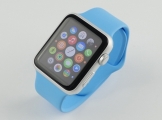|
借助 https://github.com/stevenjs/VR-iOS-Experiment,我为我的应用程序创建了 VR 版本
现在我想在我开始与手机一起移动时移动我的 cameraNode。我正在尝试从核心运动中使用 userAcceleration,但我不知道如何做到这一点。我也是核心运动的新手。
请帮我解决这个问题。
Best Answer-推荐答案
此代码将适应您的设备方向......它基本上是一个 sphereNode,中间有一个 cameraNode。 Core Motion 控制摄像机 View 。
import UIKit
import SceneKit
import CoreMotion
import SpriteKit
import AVFoundation
class Video360VC: UIViewController {
@IBOutlet weak var sceneView: SCNView!
let motionManager = CMMotionManager()
let cameraNode = SCNNode()
var player: AVPlayer?
override func viewDidLoad() {
super.viewDidLoad()
startSelected()
}
func startNewPlayer(fileURL: URL, fileURLSub: URL){
player = AVPlayer(url: fileURL)
let videoNode = SKVideoNode(avPlayer: player!)
let size = CGSize(width: 4096, height: 2048)
videoNode.size = size
videoNode.position = CGPoint(x: size.width/2, y: size.height/2)
let spriteScene = SKScene(size: size)
spriteScene.scaleMode = .resizeFill
spriteScene.addChild(videoNode)
let sphereNode = createSphereNode(material:spriteScene)
configureScene(node: sphereNode)
guard motionManager.isDeviceMotionAvailable else {
fatalError("Device motion is not available")
}
startCameraTracking()
player?.isMuted = true
player?.play()
}
func createSphereNode(material: AnyObject?) -> SCNNode {
let sphere = SCNSphere(radius: 20.0)
sphere.firstMaterial!.isDoubleSided = true
sphere.firstMaterial!.diffuse.contents = material
let sphereNode = SCNNode(geometry: sphere)
sphereNode.position = SCNVector3Make(0,0,0)
sphereNode.rotation = SCNVector4Make(1, 0, 0, Float.pi)
return sphereNode
}
func configureScene(node sphereNode: SCNNode) {
// Set the scene
let scene = SCNScene()
sceneView.scene = scene
//test mode help
sceneView.showsStatistics = false
sceneView.allowsCameraControl = false
// Camera, ...
cameraNode.camera = SCNCamera()
cameraNode.position = SCNVector3Make(0, 0, 0)
scene.rootNode.addChildNode(sphereNode)
scene.rootNode.addChildNode(cameraNode)
}
func startCameraTracking() {
motionManager.deviceMotionUpdateInterval = 1.0 / 60.0
motionManager.startDeviceMotionUpdates(to: OperationQueue.main) {
[weak self](data: CMDeviceMotion?, error: Error?) in
guard let data = data else { return }
self?.cameraNode.camera?.fieldOfView = 90
self?.cameraNode.orientation = data.gaze(atOrientation: .landscapeRight)
}
}
}
extension CMDeviceMotion {
func gaze(atOrientation orientation: UIInterfaceOrientation) -> SCNVector4 {
let attitude = self.attitude.quaternion
let aq = GLKQuaternionMake(Float(attitude.x), Float(attitude.y), Float(attitude.z), Float(attitude.w))
let final: SCNVector4
switch orientation {
case .landscapeRight:
let cq = GLKQuaternionMakeWithAngleAndAxis(Float(Float.pi/2), 0, 1, 0)
let q = GLKQuaternionMultiply(cq, aq)
final = SCNVector4(x: -q.y, y: q.x, z: q.z, w: q.w)
case .landscapeLeft:
let cq = GLKQuaternionMakeWithAngleAndAxis(Float(-Float.pi), 0, 1, 0)
let q = GLKQuaternionMultiply(cq, aq)
final = SCNVector4(x: q.y, y: -q.x, z: q.z, w: q.w)
case .portraitUpsideDown:
let cq = GLKQuaternionMakeWithAngleAndAxis(Float(Float.pi), 1, 0, 0)
let q = GLKQuaternionMultiply(cq, aq)
final = SCNVector4(x: -q.x, y: -q.y, z: q.z, w: q.w)
case .unknown:
fallthrough
case .portrait:
let cq = GLKQuaternionMakeWithAngleAndAxis(Float(-Float.pi), 1, 0, 0)
let q = GLKQuaternionMultiply(cq, aq)
final = SCNVector4(x: q.x, y: q.y, z: q.z, w: q.w)
default:
print("Default")
}
return final
}
}
关于ios - VR 中的 SceneKit 摄像机移动,我们在Stack Overflow上找到一个类似的问题:
https://stackoverflow.com/questions/36679913/
|  客服电话
客服电话
 APP下载
APP下载

 官方微信
官方微信

















